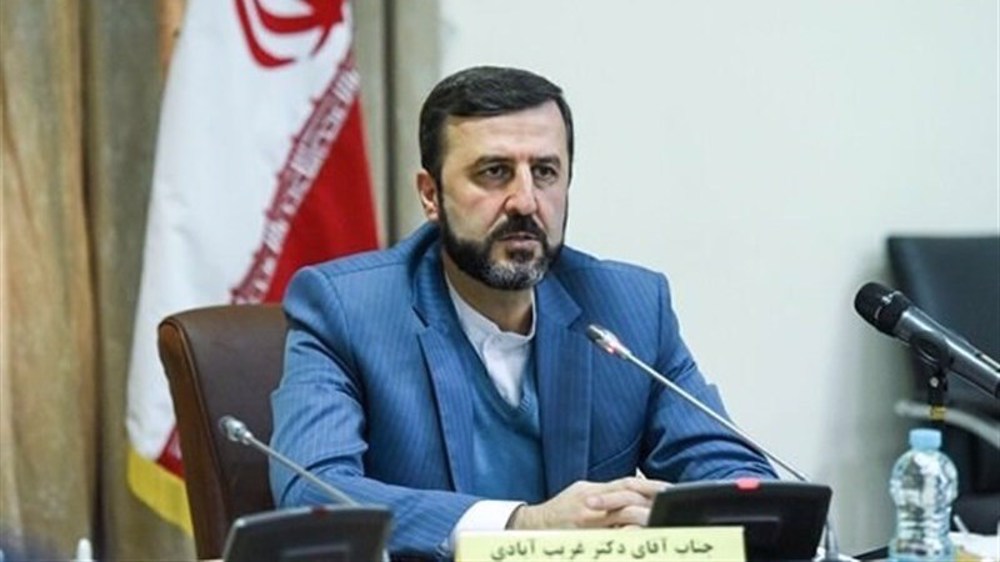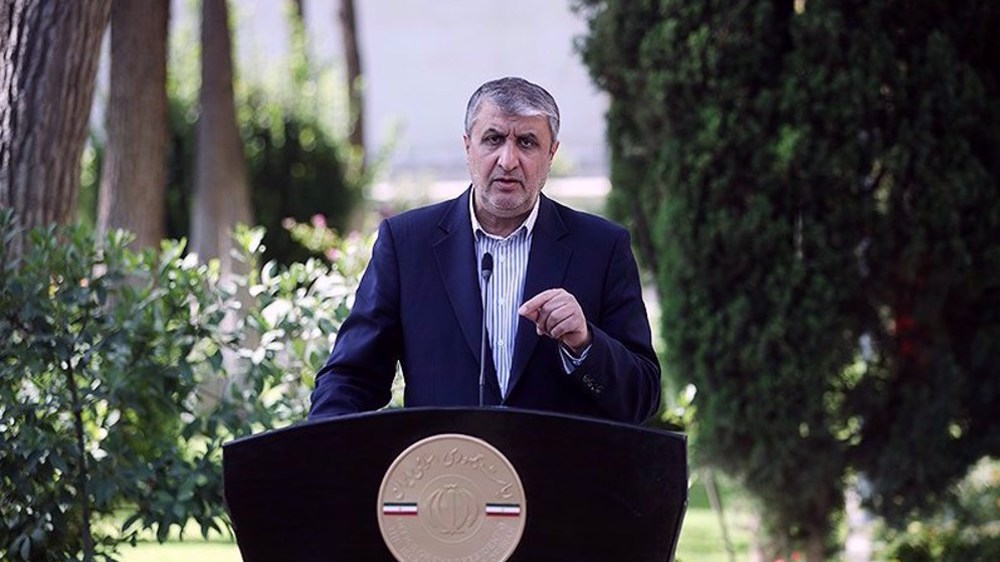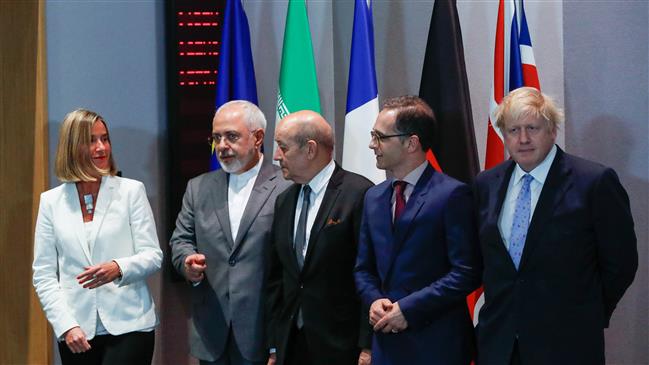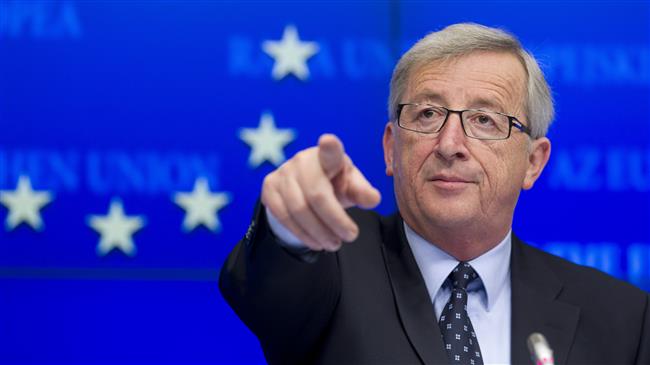Iran to reach 190k SWUs of enrichment capacity in 10 months: Nuclear chief
Iran’s nuclear chief says the country could reach 190,000 SWUs (separative work unit) of uranium enrichment capacity within 10 months at the Natanz nuclear site, where he inaugurated a facility for producing centrifuges.
Ali Akbar Salehi, who heads the Atomic Energy Organization of Iran (AEOI), made the remarks on state television on Wednesday night following the inauguration of the montage center at the Natanz plant in central Iran.
“We had designated Natanz for producing one million SUWs, and have provided the required infrastructure,” he said.
SWUs are a measure unit of uranium enrichment capacity.
“Within 10 months, with the launch of a set of newly-built enclosures, we could produce 190,000 SWUs at Natanz,” said Salehi, adding, however, that “this does not mean we start the production of advanced centrifuges for industrial use at this facility,” he added.
At this facility, he added, Iran would assemble centrifuges while staying within the limits outlined in the 2015 nuclear deal, officially called the Joint Comprehensive Plan of Action (JCPOA),
The comments followed the AEOI’s letter to the International Atomic Energy Agency (IAEA), informing the UN nuclear watchdog, which monitors the technical aspect of the JCPOA's implementation, of the start of certain nuclear activities at Natanz.
The AEOI is acting on an order by Leader of the Islamic Revolution Ayatollah Seyyed Ali Khamenei, who urged on Monday preparations for a potential collapse of the Iran deal following the US’s withdrawal.
The Leader ordered the AEOI to get prepared for a rise to 190,000 SWUs within the framework of the deal.
Salehi said Iran had started constructing the montage facility during the nuclear talks that culminated in the deal in 2015, adding, “If we were to follow the natural trend, this could have been achieved in 7 to 8 years.”
Elsewhere in his remarks, Salehi said that Iran would montage new centrifuges for research and development purposes at the Natanz plant within the framework of the JCPOA.
“Nothing has happened in violation of the JCPOA and there has been no disruption in the process of inspections with the recent order and statements of the Leader of the Islamic Revolution.”
Last month, US President Donald Trump announced Washington’s pullout from the JCPOA, vowing to reinstate nuclear sanctions on Iran and impose “the highest level” of economic bans on the Islamic Republic.
He also said Iran was in “pursuit of nuclear weapons,” a claim that contradicts numerous IAEA reports confirming the peaceful nature of Iran’s nuclear work and the country’s full compliance with the accord.
US Secretary of State Mike Pompeo also threatened Iran with the “strongest sanctions in history” if it did not comply with a list of steep demands, including ending uranium enrichment.
Iran has said it will remain committed to the deal for the time being, pending negotiations with other signatories to the JCPOA to see if Iran’s interests would still be protected under an accord without the US.
Tehran’s other partners in the deal – Germany, France, Britain, Russia and China – have all condemned Washington’s unilateral withdrawal and said they would still live up to their commitments as part of the deal.
Iran has said the European parties need to take practical measures to help Tehran collect the dividends of the deal when the American sanctions return.
Ayatollah Khamenei also said in his recent speech that the European governments should not expect the Iranian nation “to both put up with sanctions and give up its nuclear activities and continue to observe limitations.”
Religious coexistence in Iran
Italy arrests Palestinian activist amid crackdown on anti-Israel voices
VIDEO | Myanmar's capital goes to polls amid civil war, humanitarian crisis
Israeli forces invade Syrian village amid continued aggression
UN experts warn Palestine Action hunger strikers at risk of death
Putin: Russia will use force to achieve goals if Ukraine stalls peace negotiations
The Year That Was: Best of ‘Iran First’ in 2025, the year of major Iranian breakthroughs
German journalist says Israeli forces raped her after abducting her from Gaza flotilla

















 This makes it easy to access the Press TV website
This makes it easy to access the Press TV website